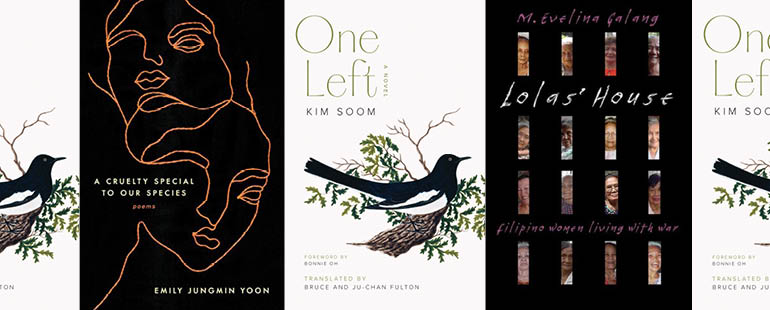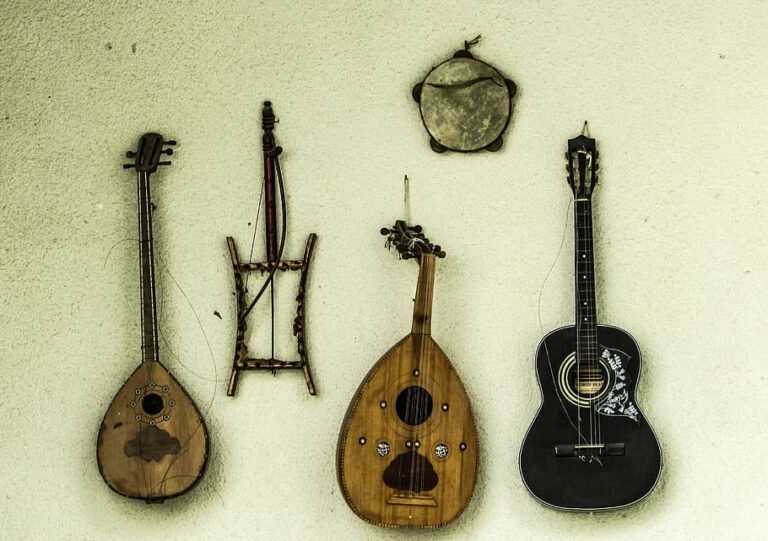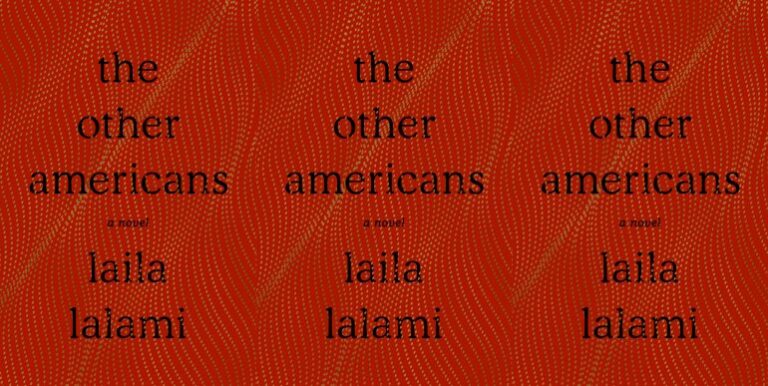Privileging Survivors’ Voices

I’ve always felt uncomfortable with the term “comfort women,” which I first learned about more than fifteen years ago as an undergraduate creative writing student of M. Evelina Galang’s. At the time, Galang was deep into her process of collecting the testimonies of elderly Filipina women who, decades before, had survived the World War II rape camps of the Imperial Japanese Army. As she taught us of these horrors and the euphemisms surrounding them, I found such abuse difficult to imagine. I was a naïve college student sitting in a spotless, air-conditioned classroom; it was hard in that moment, long before the #MeToo era, for me to grasp even the trauma of modern-day rape, let alone what had happened in these wartime “comfort stations” located across Asia sixty years ago. Yet I knew from the first time I heard the phrases “comfort women” and “comfort station” that they did little to capture the horrific scenes of the Japanese military’s systematic enslavement and torture of young women and girls across the Pacific warfront.
In recent years, literature authored by Asian and Asian American women has helped to fill critical gaps in the public’s understanding of this dark history—Galang’s nonfiction book Lolas’ House: Filipino Women Living with War (2017); Emily Jungmin Yoon’s poetry collection, A Cruelty Special to Our Species (2018); and Kim Soom’s novel One Left (2016), published in translation from the Korean by Bruce and Ju-Chan Fulton in 2020. These three books make it clear that for victims of wartime sexual slavery, there was little to no “comfort” to be found in the rape camps; rather, these girls and women were forced into overwhelming squalor and dehumanizing abuse.
The issue of the Japanese military’s wartime sex slavery has always been plagued by obfuscation and outright denial. In the foreword to One Left, Bonnie Oh, emerita distinguished professor of Korean studies at Georgetown University, writes that at the end of World War II, many enslaved women “were slaughtered on site or thrown from aboard ships on return trips to their home countries—to eradicate the evidence. Only twenty thousand survived. … For decades these women remained silent as the world swept history under the rug. The Japanese government concealed it to the best of their ability.”
Oh’s foreword provides crucial context to Kim’s book, which is the first Korean novel devoted exclusively to the subject of the “comfort women.” In direct opposition to the Japanese government’s efforts to suppress the memory of its sex slave camps, Kim chooses to deploy language like a scalpel, crafting her narrative from the testimonies of dozens of Korean survivors. She finds exacting, sometimes nauseating descriptions for the torture these women faced in Japanese military brothels: battered genitals that feel “as pulpy as a sea cucumber,” violent soldiers giving off a “goat-like stink,” a woman’s “crusted face [that] looked like a peanut shell,” all annotated extensively throughout the text in hundreds of endnotes. While these details do not make for an easy read—none of the three books discussed in this essay do—Kim’s details and artistry have the power to breathe life into these excruciating experiences through fiction that assumes a survivor’s perspective.
Granting dignity to the few living survivors is a matter of urgency, as highlighted by the fictional construct of One Left. Kim sets her novel in a very near future in which the last known Korean survivor is on her deathbed. The news reaches an unnamed elderly woman living alone in a largely abandoned neighborhood, a woman who has kept her own enslaved past a secret for 70 years.
It is only a matter of time before reality catches up to Kim’s novel. As of July 2021, Reuters reported that “only 14 of the 240 registered [Korean] survivors of Japan’s wartime brothels are still alive in South Korea, nearly half the number who were alive just three years ago.” The number of registered survivors—women who were willing to publicly come forward, despite the intense burden of shame—is just a fraction of the estimated 400,000 girls and women whom the Japanese military abducted or entrapped from countries including the Philippines, Indonesia, China and beyond; Galang cites this figure, based on Vassar professor PeiPei Qiu’s scholarship.
Galang titles her book Lolas’ House after the building that houses the Metro Manila offices of LILA Pilipina, an advocacy group for Filipina survivors that she visits repeatedly to collect and corroborate the women’s oral histories. Of more than 1,000 Filipina women whom the Japanese military coerced into sex slavery, Galang met 40; she eventually focused on 16 voices for Lolas’ House. “By the time the [Filipina] women began their campaign for justice,” she writes, “they had grown so old that the people called them ‘lolas,’ the Tagalog word for ‘grannies.’”
When referring to or addressing her beloved interviewees, Galang often uses “lola” as a sign of affection and respect: “Hours after my last interview with Lola Carmencita, I burn with fever and it’s as if I have donned their lives,” she writes about one woman, Carmencita Cosio Ramel. “‘Ano bai to, Lola?’ I ask.” (In the same vein, Korean activists often use their language’s word for grandmother, “halmeoni,” to refer to survivors.) At other times, Galang refers to her subjects as “the women,” “survivors,” and, occasionally, “comfort women”—but always the latter in quotation marks, to denote the term’s euphemistic usage. In a few passages that crackle with righteous outrage, Galang cites another term, a pejorative historically used for the women in Tagalog: Japanese leftovers. “Tira ng Hapones are the women they used. Tira ng Hapones are the women who gave them ‘comfort.’ They are the women they captured and placed into garrisons and raped repeatedly,” she writes.
Language, Galang acknowledges, is a slippery thing, and she observes that her elderly interview subjects lean on euphemisms themselves: “When the lolas cannot say rape, or when they cannot talk about being thrown down and pried open, when the words may rekindle old pain, they say ginamit nila ako. They used me. Over and over again, she says, they used me.” Importantly, the author sets her own reflections and context aside from the painstaking (and painful) translated transcriptions of the lolas’ interviews, which she prints in bold throughout the book, allowing their words, their voices, to take precedence.
In A Cruelty Special to Our Species, Yoon likewise draws directly from survivors’ statements and other documentary materials to craft poems that grapple with the past and present of sexual violence against women. An entire section of the book, “The Testimonies,” stays rooted in the accounts of named sources—women like Hwang Keum-ju (“I was alone and walked all the way to the 38th parallel / American soldiers sprayed me with so much DDT / all the lice fell off me.”) and Kim Sang-hi (“I was thrown onto a truck / of mournful sounds and weeping / these girls and I / crossed the border into China”). Poetry becomes a vehicle for Yoon’s deep knowledge and interpretation of this history, with documentary sources cited carefully in the acknowledgments that open the book.
Certain poems, like “Comfort,” offer more exegesis, telescoping in time and perspective to move from the poet’s present day to World War II within the same lines: “On Wednesday, / it rained. On the succulents, / on the surviving women. / Tricked or taken, carted to Japanese soldiers. / The condom said Attack Number One. / Rinsed for reuse. On Wednesday, / I listened to The Four Seasons.” While Yoon and her direct relations may not have experienced the violence of the wartime rape camps directly, her words artfully connect her experience as a Korean immigrant woman in the United States to this history. “I’d like my poetry to remind readers that even if a part of history may not seem to be relevant to their lives, it is—it is their reality, too,” Yoon states in her author’s note.
In “Notes,” one of her later poems, Yoon documents present-day perspectives on the “comfort women” issue, quoting sources like government statements and an online comment that parrots spurious claims on the purpose of the “comfort stations” (the latter underlined and italicized in her poem) and injecting her own commentary and point-of-view (the parenthetical footnoted by the asterisk): “Comfort women dedicated to raise soldiers’ morale and spirits, and to prevent rape crimes in countries.* / *(Rape to prevent rape, prevent disturbance of peace, impairment of dignity).” Like Galang, when writing from her own perspective, Yoon makes sure to denote the quotations around “comfort women,” but removes them when presenting others’ words.
I wish that there were a more accurate, succinct term other than “comfort women” to describe these victim-survivors. In comparison, the phrase “wartime sexual slavery survivors” remains vague yet clunky, removing the Japanese military’s culpability. I wonder if survivors themselves use “comfort women” in their protest signs and literature as an effort to be made legible, as if to say in shorthand, “this is who we are, this was the ordeal we suffered.”
The Pacific War began eighty-one years ago, yet we as English readers have only just begun to access literature that centers women victims of wartime sexual violence. Through fiction, nonfiction, and poetry, these books serve to honor and preserve survivors’ voices for many generations to come. “I’d like my poetry to serve to amplify and speak these women’s stories, not speak for them,” Yoon writes in her author’s note. “It is crucial to know, listen, tell, and retell various stories, so we may better theorize and understand our existence.”
Galang, too, takes an expansive tone when describing the lolas’ fight to insert themselves into the historical record. “Their struggle has always been for the future,” she writes. “Not just for the Filipina ‘comfort women’ of World War II, but all ‘comfort women.’ Not just for ‘comfort women,’ but all women of all nations.”
And in a particularly stirring passage of One Left, Kim and the Fultons depict a wave of Korean survivors coming forward to expose their truths, creating a powerful, explicit echo of the contemporary #MeToo movement: “Next came other comfort women, one by one, going public. ‘Me too, I’m a victim.’ ‘Me too, a victim.’ ‘Yes, me too, a victim.’ ‘Me too, I’m a victim.’…”
As more of the halmeoni, the lolas, and other survivors die—“average age of the surviving women: 90,” Yoon writes—their stories and the historic truths of their experiences face constant threat of erasure. Since 1991, when Kim Hak-sun became the first Korean halmeoni to come forward publicly, the Japanese government has consistently refused to take responsibility for its wartime crimes, choosing instead to fight for the censoring of school textbooks that mention this history and the removal of international memorials to survivors. The issue of recognition and compensation for wartime sexual slavery victims is a persistent foreign policy torn between Japan and South Korea, the home country of 80 percent of the girls and women kidnapped into slavery and the only country to demand an official state apology and reparations for victims. In academia, last year a Harvard law professor’s disgracefully biased and poorly sourced article on the contracts and economics of the Japanese military’s sex slave camps drew widespread condemnation in the United States and South Korea (and praise among disreputable right-wing Japanese media and activists) after he asserted erroneously that survivors’ testimonies of coercion and force were “pure fiction” and that the women “chose prostitution.” When Galang read from Lolas’ House in New York in 2017 (an event I attended), a member of the audience who identified himself as Japanese had the audacity to call into question her own credibility and scholarship.
In a “post-truth” era, in which powerful sources seek to deny, dispute, or expunge the painful histories of the Holocaust, slavery, the “comfort women,” and other human tragedies, Kim, Yoon and Galang’s texts are incredibly important. These books serve as a rebuttal to history deniers and whitewashers, privileging women’s voices, including visceral detail of the crimes they survived, and providing (though it should not be necessary) extensive documentation and proof of their abuse. They also use artistry to capture the readers’ imagination and to begin to pave a path toward justice. Of her craft and process, Galang writes, “Sometimes the translation of words does not hold the energy of the action. The sentiment is lost. The translation, lost. The words cannot stand on their own. They must sit in a nest of context. They must be explained in action. In story. In cultures we enter only through character.” Therein lies the power of these authors’ works, of using art as a vehicle to illuminate the crimes of the past and connect them to our present and future—and the achievement of doing so with great beauty.


